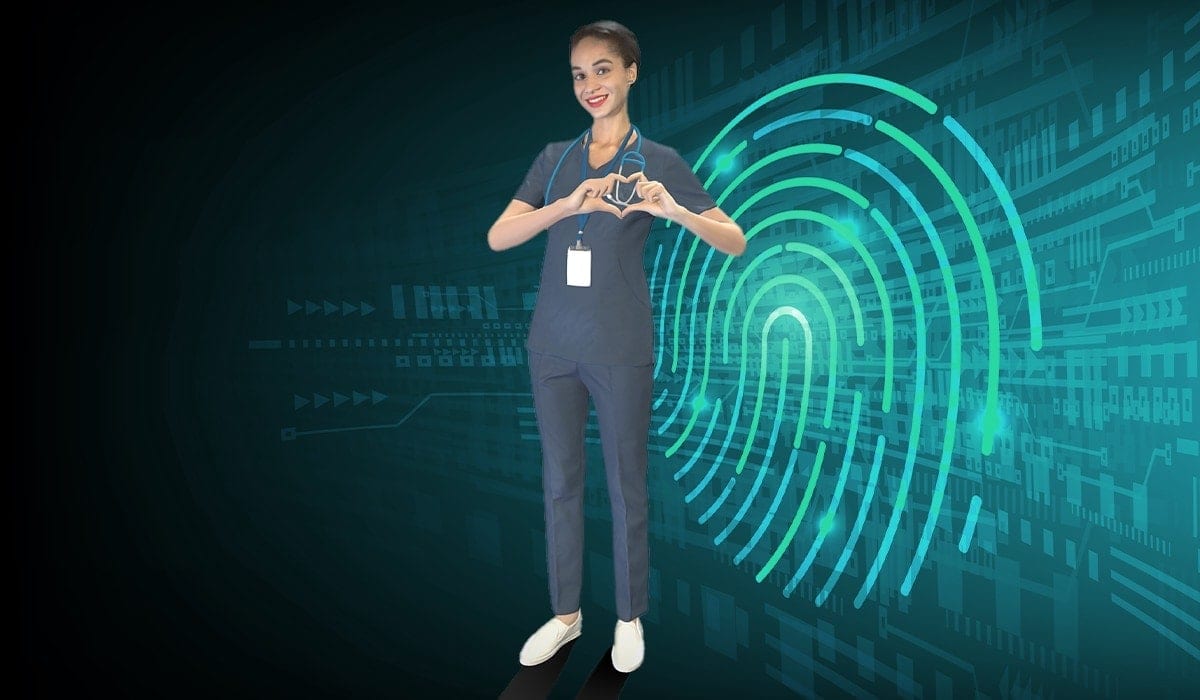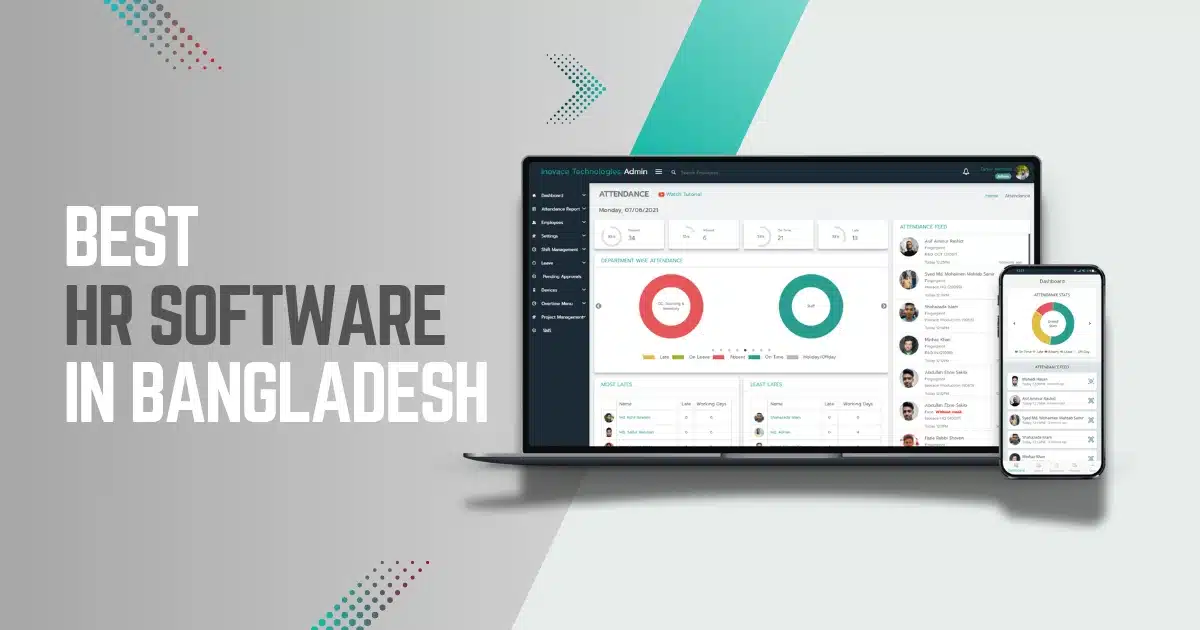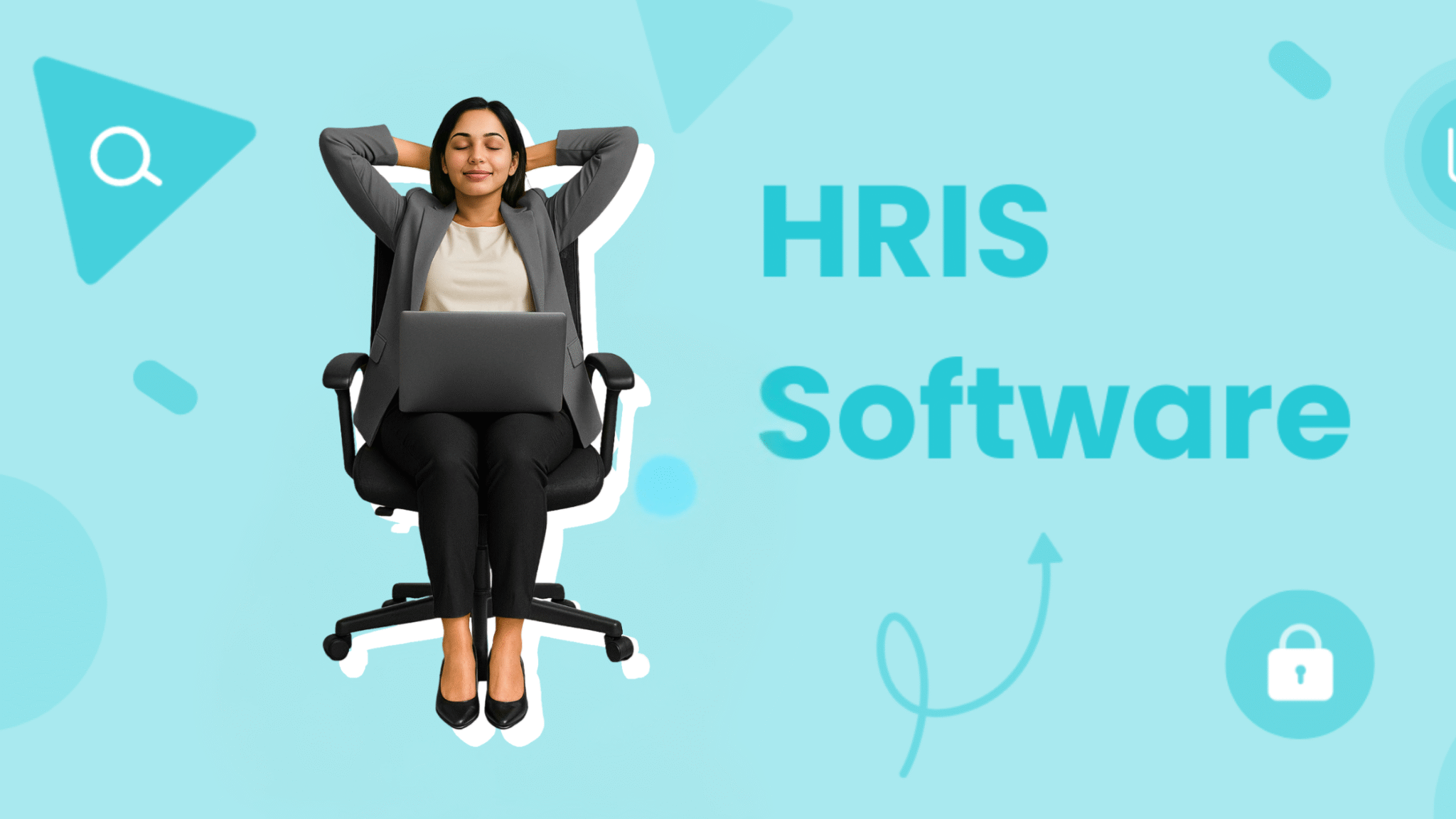Biometric healthcare solutions are transforming medical services in Bangladesh. They offer improved patient care and security.
Bangladesh’s healthcare system faces many challenges, including patient identification and data security. Biometric solutions help address these issues. These technologies use unique physical traits like fingerprints and facial recognition. This ensures accurate patient records and reduces fraud. Hospitals and clinics can streamline operations and improve patient experiences.
By adopting biometric healthcare solutions, Bangladesh can enhance its medical services and ensure better outcomes. This blog will explore how these solutions are making a difference in the healthcare sector of Bangladesh.
Credit: market.us
Biometrics For Healthcare Solution in Bangladesh
Biometric Healthcare Solutions Bangladesh is at the forefront of integrating advanced technology into the healthcare sector. Biometrics, a cutting-edge technology, plays a crucial role in ensuring accurate patient identification and improving overall healthcare delivery. Understanding biometrics and its importance can help us appreciate its impact on healthcare in Bangladesh.
What Is Biometrics?
Biometrics refers to the measurement and statistical analysis of unique physical and behavioral characteristics. These characteristics are used for identification and access control. Common biometric identifiers include:
-
Fingerprints: Unique patterns on fingers.
-
Facial recognition: Unique facial features.
-
Iris scans: Patterns in the colored part of the eye.
-
Voice recognition: Unique voice patterns.
-
DNA: Genetic blueprint.
Biometrics offers a high level of accuracy and security, making it ideal for various applications. It ensures that the person being identified is indeed who they claim to be. This technology is increasingly used in healthcare to enhance patient care and data security.
Importance of Biometric Devices In Healthcare
Biometrics has significant importance in healthcare. It improves patient identification accuracy, ensuring that the right patient receives the right treatment. Some key benefits include:
-
Enhanced Security: Prevents unauthorized access to patient records.
-
Reduced Fraud: Minimizes identity theft and insurance fraud.
-
Improved Patient Care: Accurate identification leads to better treatment.
In Bangladesh, biometric solutions help in managing patient data efficiently. By using biometric identifiers, healthcare providers can quickly access patient histories, allergies, and previous treatments. This leads to faster and more accurate diagnoses.
Table showing the benefits of biometrics in healthcare:
|
Benefit |
Description |
|---|---|
|
Enhanced Security |
Protects patient data from unauthorized access |
|
Reduced Fraud |
Minimizes identity theft and insurance fraud |
|
Improved Patient Care |
Ensures accurate patient identification and treatment |
Biometrics is transforming healthcare in Bangladesh by providing a secure and efficient system for patient management. It ensures that healthcare providers have accurate information, leading to better patient outcomes.
Current Healthcare Landscape
Biometric Healthcare Solutions Bangladesh is transforming the healthcare landscape in the country. The healthcare system in Bangladesh faces many challenges, but technology offers potential solutions. By integrating biometric technologies, the healthcare sector aims to improve efficiency and patient care.
Healthcare Challenges
The healthcare system in Bangladesh faces several challenges. These include limited resources, inadequate infrastructure, and a shortage of trained healthcare professionals. Additionally, there are issues related to patient identification, medical record management, and access to healthcare services.
Some key challenges include:
-
Limited Resources: Hospitals and clinics often lack essential equipment and supplies.
-
Inadequate Infrastructure: Rural areas face significant gaps in healthcare facilities.
-
Shortage of Healthcare Professionals: There is a high patient-to-doctor ratio.
-
Patient Identification: Many patients do not have proper identification, leading to errors.
-
Medical Record Management: Paper records are prone to loss and errors.
-
Access to Healthcare Services: Many people in remote areas cannot easily access healthcare.
Below is a table highlighting some of these challenges:
|
Challenge |
Description |
|---|---|
|
Limited Resources |
Lack of essential equipment and supplies in hospitals and clinics. |
|
Inadequate Infrastructure |
Significant gaps in healthcare facilities in rural areas. |
|
Shortage of Healthcare Professionals |
High patient-to-doctor ratio. |
|
Patient Identification |
Many patients do not have proper identification, leading to errors. |
|
Medical Record Management |
Paper records are prone to loss and errors. |
|
Access to Healthcare Services |
Difficulty in accessing healthcare, especially in remote areas. |
Role Of Technology
Technology plays a crucial role in addressing these healthcare challenges. Biometric solutions, in particular, offer several benefits. They help in improving patient identification, ensuring accurate medical records, and enhancing overall healthcare delivery.
Key roles of technology in healthcare include:
-
Improved Patient Identification: Biometric systems ensure accurate patient identification, reducing errors.
-
Efficient Medical Records: Digital records are more secure and easily accessible.
-
Enhanced Access to Care: Telemedicine and mobile health apps connect patients with healthcare providers.
-
Resource Management: Technology helps in better allocation and use of resources.
-
Training and Education: Online platforms provide training for healthcare professionals.
Biometric technologies, such as fingerprint and iris scanning, are particularly effective. They ensure that patients receive the right treatment and that their medical history is accurate. This reduces the risk of medical errors and improves patient outcomes.
Below is a table summarizing the role of technology in healthcare:
|
Role |
Benefit |
|---|---|
|
Improved Patient Identification |
Ensures accurate identification, reducing errors. |
|
Efficient Medical Records |
Secure and easily accessible digital records. |
|
Enhanced Access to Care |
Telemedicine and mobile apps connect patients with providers. |
|
Resource Management |
Better allocation and use of resources. |
|
Training and Education |
Online platforms for healthcare professional training. |
Biometric Healthcare Solutions Bangladesh aims to harness these technologies to overcome the existing challenges and improve the healthcare system.
Biometric Technologies
Biometric Healthcare Solutions Bangladesh is making waves in the medical sector by integrating advanced biometric technologies. These solutions aim to enhance patient identification, streamline processes, and improve overall healthcare delivery. Let’s dive into some of the most impactful biometric technologies being implemented.
Fingerprint Recognition
Fingerprint recognition is widely used due to its accuracy and ease of use. In healthcare, it helps in:
-
Patient identification
-
Access control for medical staff
-
Tracking patient records
This technology works by scanning a patient’s fingerprint and comparing it to a stored database. The scanner captures unique patterns of ridges and valleys on the finger. These patterns are then converted into a digital template.
Here are some benefits of fingerprint recognition in healthcare:
|
Benefit |
Description |
|---|---|
|
Accuracy |
High level of precision in identifying individuals. |
|
Speed |
Quick scanning and matching process. |
|
Security |
Reduces the risk of identity theft and fraud. |
Fingerprint recognition ensures that the right patient receives the right treatment. It eliminates errors and enhances the overall patient experience.
Facial Recognition
Facial recognition technology is gaining popularity in healthcare. It uses facial features to identify and authenticate individuals. Key uses include:
-
Patient check-ins
-
Access control for restricted areas
-
Monitoring patient movements
The system captures an image of the patient’s face and analyzes it using algorithms. The analysis focuses on unique facial features such as the distance between the eyes, nose shape, and jawline.
Advantages of facial recognition in healthcare:
|
Advantage |
Description |
|---|---|
|
Non-intrusive |
No physical contact required, enhancing hygiene. |
|
Convenient |
Patients don’t need to carry identification documents. |
|
Versatile |
Can be used in various healthcare settings. |
Facial recognition improves patient flow and ensures that only authorized personnel access sensitive areas. It contributes to a secure and efficient healthcare environment.
Iris Scanning
Iris scanning is one of the most secure biometric technologies. It involves capturing an image of the iris, the colored part of the eye. This method is used for:
-
High-security patient identification
-
Access control to critical medical data
-
Verification in telemedicine
The iris has unique patterns that remain stable throughout a person’s life. The scanner captures these patterns and converts them into a digital code.
Benefits of iris scanning in healthcare:
-
Exceptional security: Almost impossible to forge or alter.
-
High accuracy: Low false acceptance and rejection rates.
-
Longevity: Iris patterns do not change, ensuring long-term reliability.
Iris scanning is ideal for environments requiring high security. It ensures that patient data and sensitive areas are accessible only to those with proper authorization. This technology enhances trust and safety in healthcare facilities.
Applications In Healthcare
In Bangladesh, biometric healthcare solutions are transforming how healthcare services are delivered. These solutions use unique biological data to improve various healthcare processes. Let’s explore some key applications in healthcare.
Patient Identification
Biometric systems enhance patient identification with high accuracy. They use unique identifiers like fingerprints, facial recognition, and iris scans. This ensures that patients are correctly identified during hospital visits. The benefits are clear:
-
Reduced Errors: Misidentification can lead to wrong treatments. Biometric data minimizes this risk.
-
Efficient Patient Management: It speeds up the patient check-in process. No need for manual records.
-
Improved Record Keeping: Patient records are linked to biometric data. This ensures easy retrieval and accuracy.
Consider this simple comparison:
|
Traditional Method |
Biometric Method |
|---|---|
|
Manual entry, prone to errors |
Automated, accurate identification |
|
Time-consuming |
Quick and efficient |
|
Paper-based records |
Digital records linked to biometrics |
Access Control
Hospitals need to control access to sensitive areas. Biometric systems provide a secure way to manage this. They use fingerprints, facial scans, and other unique identifiers. This ensures that only authorized personnel access restricted areas.
-
Enhanced Security: Unauthorized access is prevented. Only verified individuals can enter.
-
Audit Trails: Access logs are automatically created. This helps in tracking who accessed what and when.
-
Convenience: No need for keys or cards. Biometric access is simple and quick.
Here’s a comparison of access control methods:
|
Traditional Access Control |
Biometric Access Control |
|---|---|
|
Keys and cards |
Biometric identifiers |
|
Prone to loss/theft |
Secure and unique |
|
Manual tracking |
Automated audit trails |
Data Security
Biometric solutions also enhance data security. Patient records and sensitive information need robust protection. Biometric data adds an extra layer of security. Here are some benefits:
-
Strong Authentication: Biometric data is hard to forge. It ensures only authorized access to data.
-
Data Integrity: Linking records to biometrics ensures data is accurate and unaltered.
-
Compliance: Biometric systems help meet regulatory requirements. They ensure data protection standards are met.
See how biometric data security compares to traditional methods:
|
Traditional Data Security |
Biometric Data Security |
|---|---|
|
Passwords and PINs |
Unique biometric identifiers |
|
Prone to hacking |
Highly secure |
|
Manual verification |
Automated and accurate |
Benefits Of Biometric Solutions
Biometric healthcare solutions in Bangladesh are transforming the medical landscape. These solutions use unique biological traits for identification and access control. The benefits of biometric solutions are profound, offering significant improvements in accuracy, security, and process efficiency.
Improved Accuracy
Biometric solutions provide unmatched accuracy in patient identification. Traditional methods like ID cards or passwords can be easily lost or forgotten. But biometric data, such as fingerprints or retina scans, are unique to each individual. This uniqueness reduces the chances of errors in patient identification.
Benefits of improved accuracy include:
-
Reduced medical errors
-
Accurate patient records
-
Better patient outcomes
A study comparing traditional ID methods with biometric solutions found that:
|
Method |
Error Rate |
|---|---|
|
Traditional ID Cards |
15% |
|
Biometric Identification |
0.1% |
This significant reduction in error rate highlights the reliability of biometric systems. With accurate identification, healthcare providers can offer better care and avoid costly mistakes.
Enhanced Security
Security is a major concern in healthcare. Biometric solutions offer higher security levels compared to traditional methods. Biometrics are nearly impossible to forge or steal. This makes unauthorized access to medical data very difficult.
Key security benefits:
-
Prevents identity theft
-
Protects patient privacy
-
Ensures only authorized access
Biometric data is encrypted and stored securely. Even if a hacker gains access to the system, the encrypted data is of no use. This added layer of security is crucial in protecting sensitive patient information.
Healthcare facilities using biometric solutions report fewer security breaches. This ensures that patient trust is maintained and legal compliance is upheld. Enhanced security measures are essential in the digital age where data breaches are common.
Streamlined Processes
Biometric solutions help in streamlining healthcare processes. Traditional methods require manual entry and verification, which is time-consuming. With biometrics, the process is automated and quick.
Benefits of streamlined processes:
-
Faster patient check-ins
-
Quick access to medical records
-
Efficient staff management
For instance, a fingerprint scan can replace the need for manual entry of patient details. This reduces waiting times and improves patient satisfaction. Staff can focus more on patient care rather than administrative tasks.
Integration of biometric systems with existing healthcare software further simplifies operations. Automated systems can update patient records in real-time, ensuring that all data is current and accurate. This integration is crucial for efficient healthcare delivery.
Overall, biometric solutions not only enhance security and accuracy but also bring efficiency to healthcare processes. This makes them an invaluable asset in modern healthcare settings.
Credit: researchdirect.westernsydney.edu.au
Challenges And Limitations
Biometric healthcare solutions in Bangladesh offer many benefits, such as improved patient identification and streamlined operations. Yet, these innovations come with challenges and limitations. Understanding these issues is crucial for successful implementation.
Privacy Concerns
Privacy concerns are a significant challenge in biometric healthcare solutions. Collecting sensitive biometric data, like fingerprints and facial scans, can lead to privacy issues. Unauthorized access and data breaches pose serious risks.
To address these concerns, healthcare providers must ensure robust data protection measures:
-
Encryption: Encrypt biometric data to protect it during transmission and storage.
-
Access Control: Implement strict access controls to ensure only authorized personnel can access sensitive data.
-
Data Anonymization: Anonymize data wherever possible to reduce the risk of identifying individuals.
Moreover, patients must be informed about data collection and usage. Transparency can build trust and reduce anxiety. Policies and regulations should be in place to govern the use of biometric data, ensuring compliance with local and international standards.
Implementation Costs
Implementing biometric solutions in healthcare comes with significant costs. These costs can be a barrier, especially for smaller healthcare providers.
The main cost factors include:
-
Hardware: Purchasing biometric scanners and other equipment.
-
Software: Investing in specialized software for data processing and management.
-
Training: Providing training for staff to effectively use biometric systems.
-
Maintenance: Ongoing maintenance and support to ensure system functionality.
A table summarizing the costs can provide clearer insight:
|
Cost Component |
Estimated Cost (BDT) |
|---|---|
|
Hardware |
500,000 – 1,000,000 |
|
Software |
200,000 – 500,000 |
|
Training |
100,000 – 200,000 |
|
Maintenance |
50,000 – 100,000 annually |
High initial costs can be mitigated through phased implementation. This approach allows providers to spread out expenses and gradually integrate biometric solutions.
Technical Issues
Technical issues can hinder the effectiveness of biometric healthcare solutions. These include hardware malfunctions, software bugs, and system integration challenges.
Common technical issues:
-
Hardware Failure: Biometric devices may fail due to wear and tear or technical faults.
-
Software Bugs: Software may have bugs that disrupt data processing and management.
-
System Integration: Integrating biometric systems with existing healthcare IT infrastructure can be complex.
Addressing these issues requires:
-
Regular Maintenance: Conduct regular maintenance checks to ensure hardware reliability.
-
Software Updates: Keep software up-to-date to fix bugs and enhance security.
-
Professional Support: Engage professional IT support for system integration and troubleshooting.
By proactively managing these technical issues, healthcare providers can ensure the smooth operation of biometric systems, enhancing overall efficiency and patient care.
Case Studies In Bangladesh
Biometric healthcare solutions have gained traction in Bangladesh. They are transforming patient care, streamlining administrative processes, and enhancing security. Case studies from various healthcare facilities in Bangladesh provide valuable insights into the practical applications and benefits of these technologies.
Successful Implementations
Several healthcare facilities in Bangladesh have successfully implemented biometric solutions. These case studies highlight the tangible benefits and positive outcomes achieved.
For example, the Dhaka Medical College Hospital introduced biometric systems to improve patient registration and tracking. This implementation resulted in:
-
Reduced wait times: Patients experienced shorter wait times due to faster registration processes.
-
Improved accuracy: Biometric data minimized errors in patient identification and record-keeping.
-
Enhanced security: The system ensured that only authorized personnel had access to sensitive patient information.
Another notable implementation occurred at the Chittagong General Hospital. They integrated biometric solutions for both patient management and staff attendance. Key outcomes included:
-
Efficient workforce management: Accurate attendance tracking reduced payroll discrepancies.
-
Better patient care: Staff availability improved, leading to better patient-to-staff ratios.
-
Cost savings: Reduced administrative overheads allowed for better allocation of resources.
The following table summarizes the successful implementations in different hospitals:
|
Hospital |
Implementation |
Outcomes |
|---|---|---|
|
Dhaka Medical College Hospital |
Patient Registration |
Reduced wait times, improved accuracy, enhanced security |
|
Chittagong General Hospital |
Patient Management & Staff Attendance |
Efficient workforce management, better patient care, cost savings |
Lessons Learned
The case studies also reveal important lessons learned during the implementation of biometric healthcare solutions in Bangladesh.
1. Infrastructure Readiness: Ensuring that the necessary infrastructure is in place is crucial. This includes reliable internet connections, power supply, and hardware maintenance.
2. Training and Adoption: Staff training is essential for successful adoption. It is important to invest in comprehensive training programs to familiarize staff with the new systems.
3. Patient Acceptance: Gaining patient trust and acceptance is vital. Clear communication about the benefits and safety of biometric systems can help in achieving this.
4. Data Privacy: Ensuring data privacy and security is paramount. Implementing robust data protection measures helps in maintaining patient confidentiality and trust.
5. Continuous Evaluation: Continuous monitoring and evaluation of the systems are necessary. This helps in identifying areas for improvement and ensuring optimal performance.
The experiences from these implementations offer valuable insights for future projects. By addressing these key lessons, healthcare facilities can better prepare for successful biometric system integration.
Credit: www.youtube.com
Future Trends
Biometric Healthcare Solutions in Bangladesh are set to transform how we approach medical care. With emerging technologies, the future looks promising. From improved patient identification to enhanced data security, biometric solutions are paving the way for a more efficient healthcare system. Let’s explore the future trends in this sector.
Innovations On The Horizon
Bangladesh is embracing new technologies in biometric healthcare. These innovations are set to bring remarkable changes. Here are some key advancements:
-
Facial Recognition: Hospitals will use facial recognition for patient check-ins. This will reduce the need for physical IDs.
-
Fingerprint Scanning: Fingerprint scanners will ensure accurate patient identification. This will help in maintaining precise medical records.
-
Retina Scanning: Retina scans will provide a higher level of security. This will protect sensitive patient data.
-
Wearable Biometric Devices: Devices like smartwatches will monitor vital signs. These devices will send real-time data to healthcare providers.
Here’s a table summarizing these innovations:
|
Innovation |
Benefit |
|---|---|
|
Facial Recognition |
Streamlined check-ins, reduced need for physical IDs |
|
Fingerprint Scanning |
Accurate patient identification, precise medical records |
|
Retina Scanning |
Enhanced security for patient data |
|
Wearable Biometric Devices |
Real-time monitoring of vital signs |
Potential Impact On Healthcare
The adoption of biometric solutions will significantly impact healthcare in Bangladesh. These impacts are both positive and far-reaching:
-
Improved Patient Safety: Accurate identification reduces errors. This ensures that patients receive the correct treatment.
-
Efficient Data Management: Biometric data makes record-keeping easier. It reduces paperwork and manual errors.
-
Enhanced Security: Biometric methods are harder to forge. This protects sensitive health information.
-
Reduced Healthcare Costs: Automation cuts down administrative costs. It makes healthcare more affordable.
Here’s a breakdown of these impacts:
|
Impact |
Description |
|---|---|
|
Improved Patient Safety |
Accurate identification, correct treatment |
|
Efficient Data Management |
Streamlined record-keeping, fewer manual errors |
|
Enhanced Security |
Harder to forge, protects health information |
|
Reduced Healthcare Costs |
Lower administrative costs, affordable care |
These advancements will shape the future of healthcare in Bangladesh. Biometric solutions promise a safer, more efficient system for both patients and providers.
Frequently Asked Questions
What Are Biometric Healthcare Solutions?
Biometric healthcare solutions use unique biological traits for patient identification and authentication. This ensures accuracy and security in medical services. They help in reducing fraud, improving patient safety, and streamlining administrative processes.
How Do Biometric Systems Improve Patient Safety?
Biometric systems ensure accurate patient identification, preventing medical errors. They help in verifying patient records and administering correct treatments. This reduces the risk of mix-ups and enhances overall patient safety.
Are Biometric Solutions Secure For Healthcare Data?
Yes, biometric solutions are highly secure for healthcare data. They use unique biological traits, making unauthorized access difficult. Advanced encryption and secure storage methods further protect patient information from breaches.
What Types Of Biometrics Are Used In Healthcare?
Common biometrics in healthcare include fingerprint, iris, and facial recognition. Each type offers unique advantages for accurate patient identification and authentication. These technologies improve efficiency and security in healthcare settings.
Summing Up,
Biometric healthcare solutions in Bangladesh offer immense potential. They enhance security and improve patient care. Hospitals and clinics can benefit greatly. These technologies streamline processes, making them more efficient. Patients also experience faster services and better privacy. Implementing biometric systems can transform the healthcare sector.
It creates a safer environment for everyone. Bangladesh stands to gain much from embracing these advancements. By adopting biometric healthcare solutions, the country can move towards a healthier future. Let’s embrace this change for a better tomorrow.








